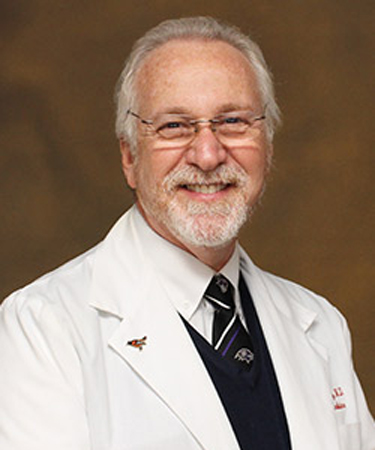Monday December 03, 2018 –
Friday December 07, 2018
8:00am-12:15pm
DEC 3 – 7, 2018
Primary Care, Internal Medicine and Family Medicine: An Evidence-Based Approach to Patient Care
Event Details
When
Where
The Westin Sarasota, FL
The Westin, Sarasota, Florida
Event Code
SEMLA-3320181203
Course Topics
Day 1
Depression and Anxiety in Primary Care.
Upon completion of this session, the participant should be able to:
- Explain the incidence and prevalence of anxiety and depression.
- Evaluate patients with signs and symptoms of anxiety and depression so as to make an accurate diagnosis as per the APA and DSM-5 Criteria.
- Prescribe appropriate medications and/or behavior modification to treat the various degrees of anxiety and depression as well as bipolar disorder from initiation to continuation and maintenance, when needed.
- Identify the suicidal patient and take appropriate actions for their safety as well as the public.
Thyroid Disease.
Upon completion of this session, the participant should be able to:
- Formulate a plan for the evaluation of a patient with presumed thyroid disease.
- Interpret common lab and imaging tests in the evaluation of a patient with thyroid disease.
- Select appropriate treatment modalities, both medical and surgical, for patients with thyroid disease according to the American Thyroid Association Guidelines.
Routine Adult Care.
Upon completion of this session, the participant should be able to:
- Determine which screening tests are indicated for particular patients, according to USPSTF guidelines.
- Employ Guideline recommendations presented for common disorders such as HBP, Lipids, STD’s, Cancers-lung, Cx, Breast, etc; AAA, Hep B & C; T2DM, etc., .
- Advise your patients regarding vitamins and supplements as per the USPSTF and Evidence.
- Order appropriate immunizations for adult patients as per the ACIP and CDC Schedules.
Anemia.
Upon completion of this session, the participant should be able to:
- Develop a diagnostic strategy to ascertain the etiology of the anemia.
- Utilize the guidelines for diagnosing anemia in children and adults in terms of available testing.
- Develop a clinical approach to treating various anemias to include Iron Deficiency and “Anemia of Chronic Disease” due to infections, inflammatory dz’s, CKD, Malignancies, Cytokines, Interferons, TNF’s, etc.
- Describe the role of consultants in the evaluation and management of anemia.
Day 2
Obesity.
Upon completion of this session, the participant should be able to:
- State the epidemiology of obesity in America and the health risks associated with obesity.
- Assess patients who are obese and determine that they are in need of treatment.
- Recommend and utilize the ACC/AHA/TOS Guidelines for the Management of Overweight and Obese Adults with options available, including diet, exercise, medications, and bariatric surgery.
- Employ the Endocrinology Society Guidelines on Pharmacological Management of Obesity.
Smoking Cessation.
Upon completion of this session, the participant should be able to:
- Recognize the role of smoking in disease etiology and the Health Consequences as identified in the 2014 Surgeon General and CDC Report.
- Develop methods of how to recognize influence and build confidence in a patients’ ability to quit smoking as per the AHCPR Guidelines.
- Utilize techniques and develop resources to enhance a patients’ ability to stop smoking, such as the NCI and smokefree.gov.
- Recognize the various benefits or advantages, indications and contraindications for use of the various available drugs and devices to assisting your patient in smoking cessation.
Improving Compliance.
Upon completion of this session, the participant should be able to:
- Use techniques that can better detect non-compliance in their patients.
- Apply techniques that can be used to increase compliance in their patients.
Irritable Bowel Syndrome.
Upon completion of this session, the participant should be able to:
- Appraise possible etiologies for Irritable Bowel Syndrome.
- Select and utilize diagnostic criteria to identify IBS, based on the current medical evidence and expert recommendations.
- Use the current medical literature to assess and screen for other conditions that can present with similar IBS symptoms.
- Detect “red flag” signs and symptoms that should make one question the diagnosis of IBS.
- Formulate an EBM diagnostic evaluation for patients with signs and symptoms of IBS.
- Use the current medical literature to develop an EBM treatment plan for Irritable Bowel Syndrome.
Day 3
Dyspepsia.
Upon completion of this session, the participant should be able to:
- Appraise symptoms and common etiologies for dyspepsia.
- Use EBM to detect “alarm symptoms” that are suspicious for GI malignancy.
- Apply current medical evidence and expert guidelines to construct a diagnostic evaluation for Dyspepsia.
- Determine appropriate treatment for Dyspepsia based on current medical evidence and the likely etiology.
Hyperlipidemia and CV Disease Prevention – A Review of the Literature and Recent AHA Guidelines.
Upon completion of this session, the participant should be able to:
- Create a diagnostic and treatment plan for patients based on the current evidence and AHA Guidelines.
- Explain similarities and differences between the most recent and previous guidelines.
- Identify areas of strength and weakness in the recent AHA Guidelines.
- Utilize the most recent cholesterol guidelines at the point of care.
Dementia.
Upon completion of this session, the participant should be able to:
- Detect symptoms consistent with the diagnosis of dementia.
- Distinguish dementia from treatable conditions that have similar presentations.
- Construct a diagnostic plan utilizing EBM and Expert Guidelines.
- Differentiate the common Dementia syndromes and distinguish the characteristics between them.
- Use EBM to design a treatment plan for dementia.
Carpal Tunnel Syndrome.
Upon completion of this session, the participant should be able to:
- Apply an evidence-based approach to the identification of Carpal Tunnel Syndrome.
- Detect clues that can help identify likely etiologies for Carpal Tunnel Syndrome.
- Construct a differential diagnosis for Carpal Tunnel Syndrome.
- Determine which patients would benefit from nerve conduction studies.
- Discriminate the severity of Carpal Tunnel Syndrome.
- Use EBM to select an appropriate treatment plan for Carpal Tunnel Syndrome.
Day 4
Evaluation and Treatment of Respiratory Infections Commonly Seen in Primary Care.
Upon completion of this session, the participant should be able to:
- Formulate appropriate evaluation strategies for patients who present with respiratory conditions.
- Identify history and exam findings that help differentiate common respiratory conditions.
- Determine situations when antibiotics are appropriate for the treatment sinus infections.
- Utilize severity index tools in the evaluation of pneumonia.
- Utilize EBM to determine appropriate treatment for common respiratory conditions.
- Discuss some of the controversies in the treatment of common respiratory infections seen in primary care.
Treating Patients with Type 2 Diabetes Mellitus.
Upon completion of this session, using the American Diabetes Association, the European Association for the Study of Diabetes Guidelines and the Cochrane Abstract Database, the participant should be able to:
- Evaluate the therapeutic goals in treating type 2 diabetes and their impact on morbidity and mortality.
- Recommend the approach for choosing an oral hypoglycemic agent to treat type 2 diabetes.
- Specify the clinical situations that would require the use of insulin to treat type 2 diabetes and the probable dosage form and average amounts required for control of A1c.
- Develop the therapeutic options for preventing diabetic complications.
Migraine Headaches – Update on Diagnosis and Treatment.
Upon completion of this session, using the International Headache Society and U.S. Headache Consortium Guidelines and the National Guideline Clearinghouse and the evidence-based reports from Clinical Evidence, the participant should be able to:
- Construct the approach for evaluating a patient with possible migraine headaches.
- Assess the advantages of supportive therapy and lifestyle changes in treating migraine headaches compared to pharmacologic therapy.
- Appraise the pharmacologic options for treating the acute pain of a migraine headache.
- Recommend a prophylactic therapy regimen for patients with recurrent migraine headaches.
Chronic Obstructive Pulmonary Disease (COPD): Evaluation and Treatment.
Upon completion of this session, using the ACCP GOLD guidelines, the AACVPR practice guidelines and the evidence-based reports from Clinical Evidence, the participant should be able to:
- Appraise patient specific data to determine if they meet diagnostic criteria for COPD.
- Analyze the role of cigarette smoking in the etiology and natural history of COPD.
- Formulate a treatment plan for the stages of COPD.
- Recommend the follow-up required to assess the therapeutic efficacy of the treatment options.
Day 5
Intro to Palliative care.
Upon completion of this session, the participant should be able to:
- COMING SOON.
Venous Thromboembolism (VTE): Diagnosis and Treatment.
Upon completion of this session, using the ACCP and ATS Guidelines and the Cochrane Abstract Database, the participant should be able to:
- Determine the diagnostic testing for evaluating a patient for possible VTE.
- Apply the algorithm for diagnosing a pulmonary embolism in multiple clinical settings.
- Differentiate the advantages and disadvantages of outpatient treatment compared to inpatient treatment for venous thromboembolism (VTE).
- Order the frequency of monitoring and the adjustments needed for warfarin therapy in the treatment of VTE.
An Evidenced-Based Look at Commonly Used Herbal Remedies.
Upon completion of this session, the participant should be able to:
- COMING SOON.
Contraceptive Options – Helping Women Make an Informed Choice.
Upon completion of this session, using the ACOG Practice Guidelines and the Cochrane Abstract Database, the participant should be able to:
- Appraise the pharmacologic differences in oral contraceptives and their role in contraceptive efficacy.
- Formulate the treatment options for contraception other than oral contraceptives.
- Specify the relative and absolute contraindications to oral contraceptives.
- Relate the circumstances that would be eligible for emergency contraception and the appropriate emergency contraception method for each situation.
Things to Do
Sarasota, Florida
Sarasota offers a truly impressive blend of shopping, cuisine, and attractions. So sail into a breathtaking sunset, golf on lush green fairways, explore St. Armands Circle, or just relax and sink your toes into some of the finest sand in the world.
White sand beaches
21 Zagat-rated restaurants
MLB spring training
Museums, theaters, and festivals
Dozens of golf courses
Presented By

Michael Malone, MD
Family Medicine Residency Director, Tidelands Health/Medical University of South Carolina; Myrtle Beach, SC

Vandana Bhide
Chief Hospitalist, St. Joseph Hospital and Medical Center, Phoenix, AZ; Clinical Assistant Professor Creighton University School of Medicine; Clinical Assistant Professor, University of Arizona College of Medicine

Kevin Ferentz
Clinical Associate Professor, Department of Family and Community Medicine; Lead Physician, GBMC Primary Care, Owings Mills, MD
Accreditation
Cancellation & Refund Policy
We understand that plans may change. Please review our cancellation and transfer options below:
30+ Days Before Conference Start Date
- Refund: Full refund minus a $50 processing fee.
- Transfer: Registrations can be transferred once, at no cost, to another conference within two years. Alternatively, registration may be placed “on hold” for up to 12 months, allowing participants to choose a suitable conference for transfer within that period.
Less Than 30 Days Before Conference Start Date
- Refund: No refunds available.
- Transfer: Registration may be transferred to another conference within 2 years at no cost. Alternatively, registration may be placed “on hold” for up to 12 months, allowing participants to choose a suitable conference for transfer within that period.
Additional Notes
- No-shows are non-refundable and non-transferable.
- If we cancel a conference, you may choose a full refund or transfer to another event.
On-Demand Courses
- All sales are final. No refunds or transfers.
Invitation Letters
If American Medical Seminars issued you an Invitation Letter to attend a CME conference in the United States and you need to cancel your registration, we will only refund 50% your registration fee. This is to cover the cost of your Invitation Letter and processing costs. By registering, you agree to the non refundable portion of the registration.
Disclaimer
In the event that AMS is required to cancel a live conference, registrants will receive a full refund within 7 business days. AMS is not responsible for charges associated with cancelled flights or hotel rooms.
How to Request a Cancellation or Transfer
Requests must be submitted in writing to mail@ams4cme.com or by calling 1-800-267-4263.
Note: By registering, you agree to this policy.


